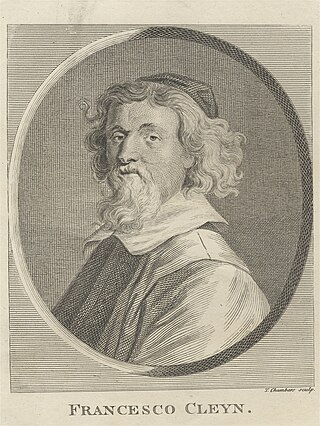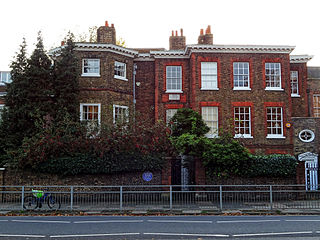Related Research Articles

Mahjong or mah-jongg is a tile-based game that was developed in the 19th century in China and has spread throughout the world since the early 20th century. It is played by four players. The game and its regional variants are widely played throughout East and Southeast Asia and have also become popular in Western countries. The game has also been adapted into a widespread online entertainment. Similar to the Western card game rummy, mahjong is a game of skill, strategy, and luck. To distinguish it from mahjong solitaire, it is sometimes referred to as mahjong rummy.

Greenwich is a town in south-east London, England, within the ceremonial county of Greater London. It is situated 5.5 miles (8.9 km) east-south-east of Charing Cross.

Harrods is a British luxury department store located on Brompton Road in Knightsbridge, London, England. It is owned by Harrods Ltd, a company currently owned by the state of Qatar via its sovereign wealth fund, the Qatar Investment Authority. The Harrods brand also applies to other enterprises undertaken by the Harrods group of companies, including Harrods Estates, Harrods Aviation and Air Harrods. Recognised as one of the world's leading department stores, it is visited by 15 million people per year.

Eltham Palace is a large house at Eltham in southeast London, England, within the Royal Borough of Greenwich. The house consists of the medieval great hall of a former royal residence, to which an Art Deco extension was added in the 1930s. The hammerbeam roof of the great hall is the third-largest of its type in England, and the Art Deco interior of the house has been described as a "masterpiece of modern design". The house is owned by the Crown Estate and managed by English Heritage, which took over responsibility for the great hall in 1984 and the rest of the site in 1995.

Eltham is a district of southeast London, England, within the Royal Borough of Greenwich. It is 8.7 miles (14.0 km) east-southeast of Charing Cross, and is identified in the London Plan as one of 35 major centres in Greater London. The three wards of Eltham North, South and West have a total population of 35,459. 88,000 people live in Eltham.
Sir Stephen Lewis Courtauld was an English philanthropist associated with geographical exploration, the restoration of Eltham Palace in south-east London, and cultural and education causes, both in the UK and in Southern Rhodesia, where he and his wife Virginia also donated to organisations promoting racial equality.

Samuel Courtauld was a British industrialist who developed his family firm, Courtaulds, to become eventually the world's largest textile company.

Samuel Courtauld was an English industrialist who is best remembered as an art collector. He founded The Courtauld Institute of Art in London in 1932 and, after a series of gifts during the 1930s, bequeathed his collection to the institute on his death.

Reginald John "Rex" Whistler was a British artist, who painted murals and society portraits, and designed theatrical costumes. He was killed in action in Normandy in World War II. Whistler was the brother of poet and artist Laurence Whistler.

The Courtauld Gallery is an art museum in Somerset House, on the Strand in central London. It houses the collection of the Samuel Courtauld Trust and operates as an integral part of the Courtauld Institute of Art.
Major John Sewell Courtauld, was an English Conservative Party politician.

The Painted Chamber was part of the medieval Palace of Westminster. It was gutted by fire in 1834, and has been described as "perhaps the greatest artistic treasure lost in the fire". The room was re-roofed and re-furnished to be used temporarily by the House of Lords until 1847, and it was demolished in 1851.

Francis Cleyn was a German-born painter and tapestry designer who lived and worked in England.
Augustine Courtauld, often called August Courtauld, was a yachtsman and British Arctic explorer, best known for serving as the solo meteorologist of a winter observation post, Icecap Station, located in the interior of Greenland in 1930–1931.

American mahjong, also spelled mah jongg, is a variant of the Chinese game mahjong. American mahjong utilizes racks to hold each player's tiles, jokers, and "Hands and Rules" score cards. It has several distinct gameplay mechanics such as "The Charleston", which is a set of required passes, and optional passing of the tiles.

The Old Court House is a Grade II* listed house located off Hampton Court Green in the London Borough of Richmond upon Thames; its origins date back to 1536. The architect Sir Christopher Wren, who lived there from 1708 to 1723, was given a 50-year lease on the property by Queen Anne in lieu of overdue payments for his work on St Paul's Cathedral. The lease passed from Wren's son to his grandson. It was purchased from the Crown Estate in 1984.

Marchese Piero Luigi Carlo Maria Malacrida de Saint-August was an Italian aristocrat, playboy and London-based interior designer. The Malacrida family were from Lombardy and a Palazzo Malacrida still exists in Morbegno, Lombardy. The property passed to another family in 1820 and is currently in the hands of the municipality.
The La Rochelle Estate is a country estate owned by the National Trust Zimbabwe, situated in the Imbeza Valley in the Eastern Highlands of Zimbabwe close to the border with Mozambique and approximately 20 km from the city of Mutare. The site comprises approximately 108 ha.

Curzon Street Baroque is a 20th-century inter-war Baroque revival style. It manifested itself principally as a form of interior design popular in the homes of Britain's wealthy and well-born intellectual elite. Its name was coined by the English cartoonist and author Osbert Lancaster, as Curzon Street in Mayfair was an address popular with London high society. While previous forms of Baroque interior design had relied on French 18th-century furnishings, in this form it was more often than not the heavier and more solid furniture of Italy, Spain, and southern Germany that came to symbolise the furnishings of new fashion.

Margaret Lemon was an English artist's model. She was the most painted female commoner of the seventeenth century, and she was the partner of Anthony van Dyck.
References
- ↑ Dennis, Xanthe. "Mah-Jongg, the Eltham Palace Lemur". English Heritage. Retrieved 30 May 2024.
- ↑ Carrier, Rhonda (2008). Frommer's London with Kids. Wiley Publishing. p. 185. ISBN 978-0-470-16545-4.